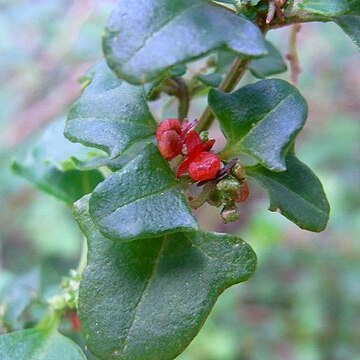A herb. It grows 2 m tall. It keeps growing from year to year. The stems are ribbed. The leaves are simple and alternate or opposite. They are 0.8-4 cm long by 0.6-2.3 cm wide. New growth has some hairs. The leaf stalks are 0.4-1.2 cm long. The flowers are on branched stalks at the ends of branches or in the axils of leaves. The flowers are 0.5-1 mm across and do not have petals. There are 5 red sepals. The fruit is a red berry. It is 2-3 mm across. There is one black seed.

